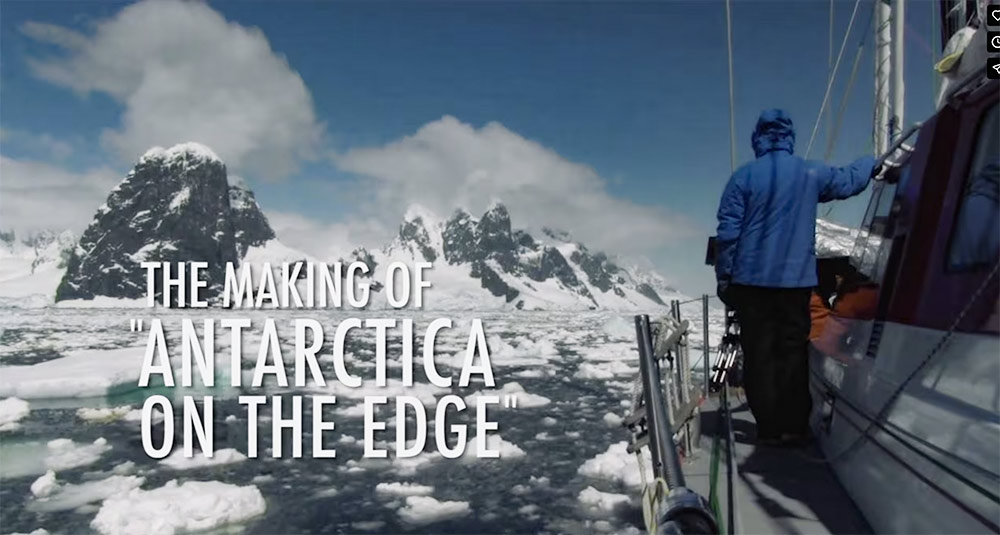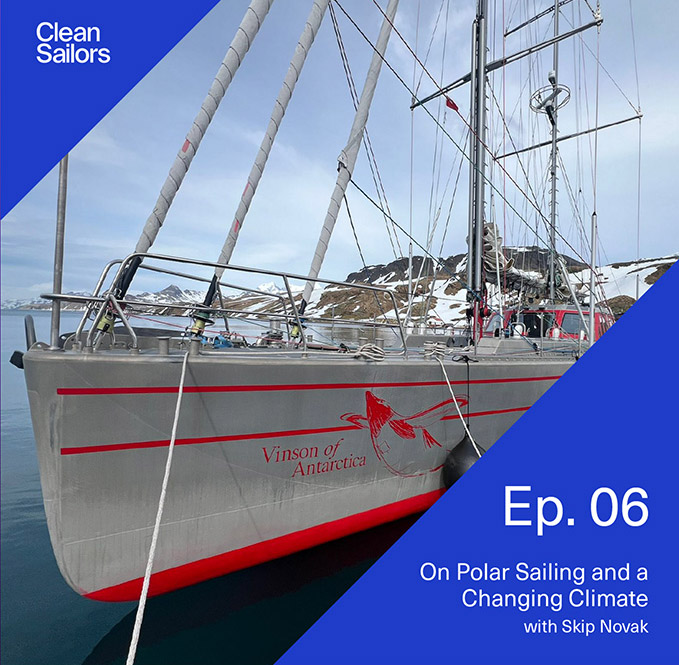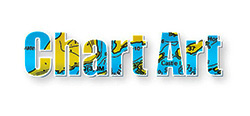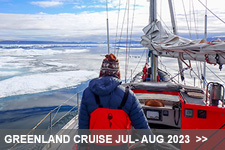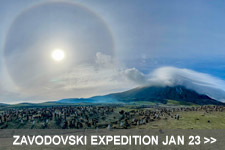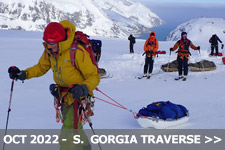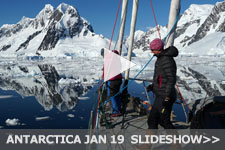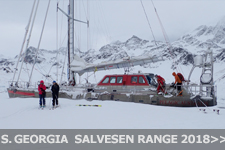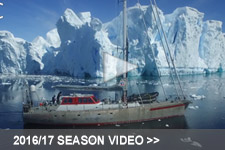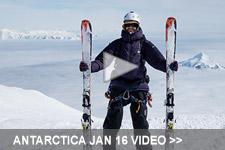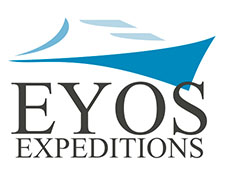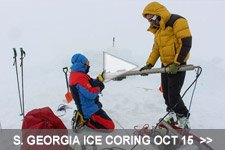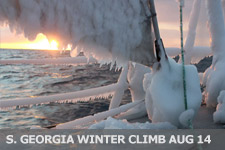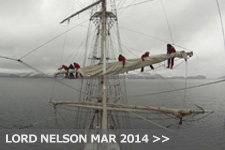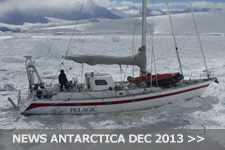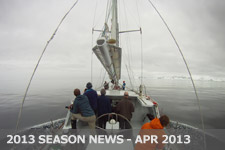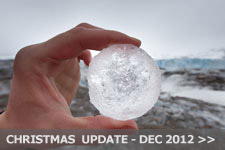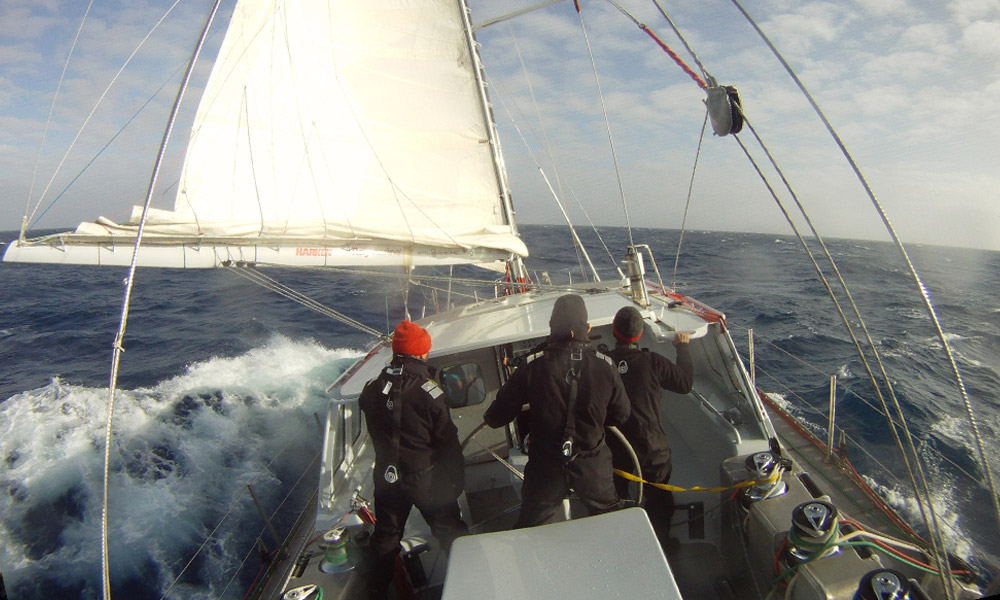10.04.2013 - Three months of "Time Remaining" in Antarctica
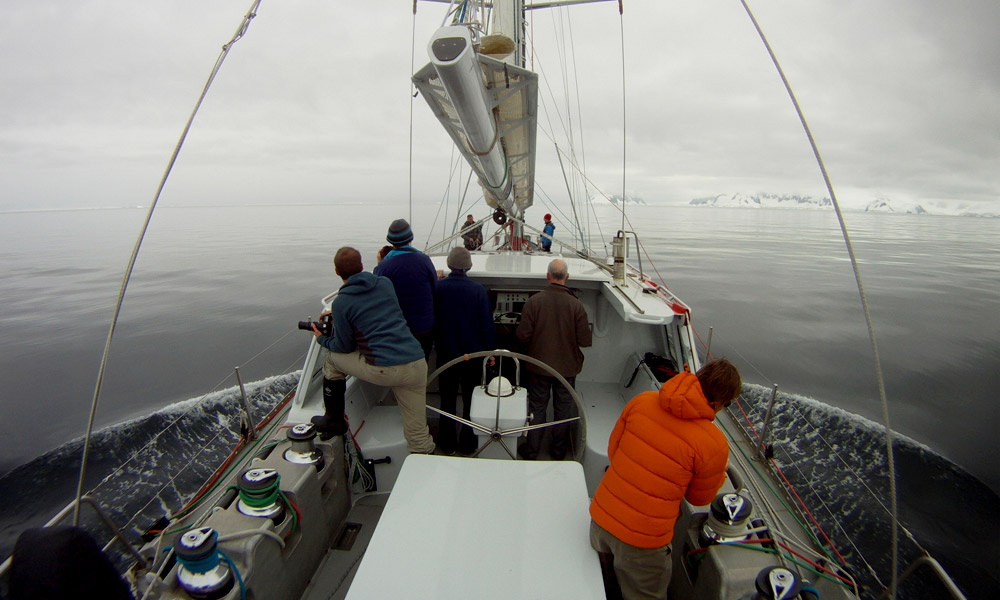
Approaching Antarctica
In my father’s generation when ‘retirement’ loomed, things naturally
slowed down. Times have certainly changed. Those of us who are professional
‘adventure junkies’ either the right or wrong side of 60, still more or less
in one piece and who are lucky enough to be out in the field are more than
ever preoccupied by the next outing. Something to do with the ‘TR Factor’ –
time remaining. This season I had three back to back voyages under very
different circumstances so ‘packing them in’ was an understatement.
From January 12th to the 26th I helped pilot a 170 foot super yacht sloop
down the west coast of Chile from Puerto Montt to Ushuaia. This was part of
Pelagic Expedition’s wider remit as a consultancy service to large yachts
visiting these remote areas, which includes permitting for the Antarctic and
South Georgia, setting out itineraries and logistics, educating the crews in
environmental protocols as well as manning these vessels with pilots, EL’s
(expedition leaders) and specialist personnel for what can be a wide variety
of adjunct activities; for instance diving, skiing, helicopter operations
and submersibles. For more see Services>>.
Disembarking from this luxurious and sophisticated vessel in Ushuaia,
January 27th, on to my original 54 foot Pelagic was a step in the other
direction – back to belt and braces simplicity. I was joined by the
editorial team from Yachting World Magazine for an intensive week’s video
filming at Cape Horn. Editor David Glenn, deputy editor Elaine Bunting with
cameraman Richard Langdon (Ocean Images) and Panteanius Yacht Insurance’s
Jonathan Reynolds, our sponsor, the task was to shoot 12 instalments for a
‘How To’ series on heavy weather and remote location sailing techniques. A
tall order in seven days.
This was a slightly risky proposition, not because of the notoriously bad
reputation of the Cape Horn area, but rather the real possibility in having
several days of calm and settled conditions which does happen after the
systems blow through the Drake Passage. However, January is the windiest
month in those environs so we took the punt – which worked out beyond our
expectations being continually blown about in 40 knots plus, 55 knots in one
anchorage two days running and a wild ride around the Horn in typically big
seas. Watch for the feature about this project in the October issue, as well
as the first of the 12 instalments, launched at the Southampton Boat Show,
September 13th.
Without a break to gather my wits or check the email (well, the social
stuff), I stepped ‘up’ from the deck on Pelagic to Pelagic Australis on
February 1st and we left two days later for Antarctica. This was a 30 day
sailing to ski and climb expedition led by myself and Stephen Venables (see
www.stephenvenables.com ). Our seven team members came from a mix of UK
(Rob Davis, Nick Putnam, David McMeeking, Toby Fountaine) USA (Tony Bell),
Australia (John Hollot) and Chile (Rodrigo Jordan), all accomplished off
piste skiers with expedition experience.

Pelagic Australis framed by an ice arch
Our primary objective was an attempt on Mt Francais, 2850 meters, on
Anvers Island, which required a week camping on the glacier. Mt Francais is
the highest summit on the Peninsula (if you conveniently ignore Mt Jackson
at 3,180 meters at the base of the Peninsula, arguably out of the maritime
sector). We sailed across the Drake uneventfully (always welcome) and on
February 7th arrived at Port Lockroy, Weincke Island. Here, at the abandoned
British Antarctic Survey station from the 50’s, since renovated, there is a
tourist visitors centre managed by the UK Antarctic Heritage Trust.
Immediately going ashore the following morning we got the ‘postcard thing’
out of the way - as you never know what can happen downstream – carpe diem!
That afternoon on Weincke Island, in view of a gear, fitness and ability
test on we made an enjoyable ascent on ski and crampons of Mt Jabet (only
the lower south summit, we were late for dinner on board). The next day
after sorting out kit, we disembarked our camping and ski gear at Access
Point on the south coast of Anvers Island, then went back to Lockroy with a
view to an early start on February 10th.
As planned, at 0600 we were back at Access Point ready with light rucsacs to
go ashore. Six of us made the dinghy landing without incident. One of the team
was feeling ill so Rob, a GP, and Stephen stayed
behind with him until the decision was made to carry on. In the meantime
brash ice appeared out of nowhere with the tide and blocked the drop point.
It wasn’t until 1100 that the other three landed, but on the other side of
Access Point, ice free, but in big swell.
It was a strong pull with heavy pulks (sleds) on soft snow up the crevassed glacier to 250 meters. From there the impressive expanse of the Marr Ice Piedmont flattened out and the going was easier, making our first camp at 1700. The next day was long, but we managed to complete the rest of the 25 kilometre approach from the coast to the base of the massif on the west side of Mt Francais and Mt Agamemnon. Our original idea was to establish a high camp on the Iliad Glacier on the north side of the Menelaus Ridge, the western rampart of Agamemnon. This ridge was the route we climbed last season, summiting Agamemnon, but save for one tyro ski racer from Cortina, stopped short of Francais due to cold and time. However, due to terrain and other issues, not least of all an inauspicious forecast, we had to scrub the Iliad plan that required an extra day of approach retreating to the site of last year’s base camp below the Menelaus Ridge to the south.
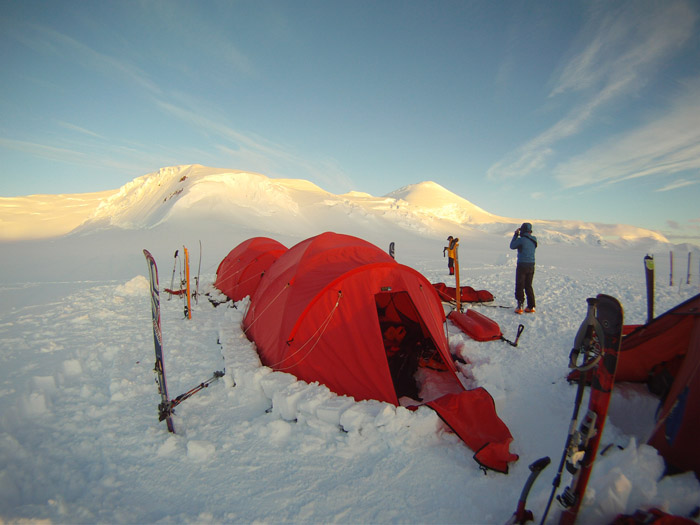
Camp below the Menelaus Ridge
The reasonable weather we had been enjoying was due to end late the next day - fresh north easterlies were predicted, so it was tomorrow or never. Eight of us left the tents at 0430, approaching the shoulder of the ridge with head torches, the route well guarded in the shadow of the massif, but with mornings twilight clearly defining the summit crests towering over us to the southeast. Negotiating several crevasse bridges on a steepish snow, we arrived on the ridge by 0630, then continued the long skin up to the summit of Agamemnon, luckily staying on our skis (unlike last year) all the way albeit having to zig zag our way through a steep section of seracs under the summit.
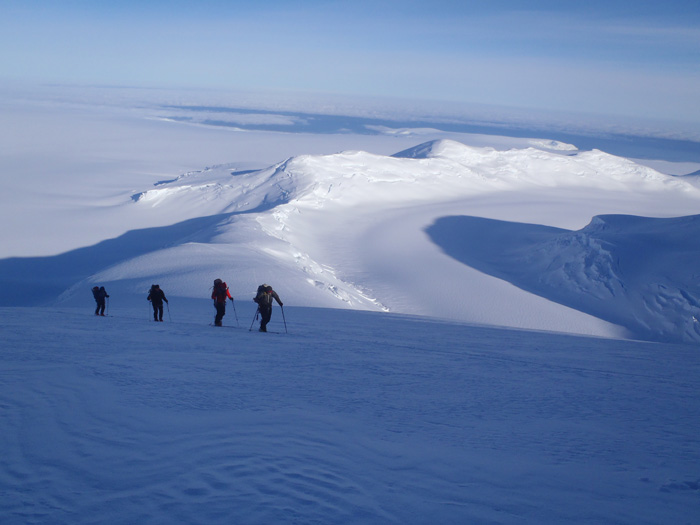
High on the Menelaus Ridge, Iliad Glacier
By 1300 we were on the top with the weather still holding, but a change of sky to the north prompted us to dispense with any premature celebrations there. We wasted no time in descending the 250 meters to the col between Agamemnon and Francais. Two of our group elected to stay in the col while six of us, dropping gear and going ‘light,’, continued to the summit of Francais, which looked a long way away, but only took an hour and a half.
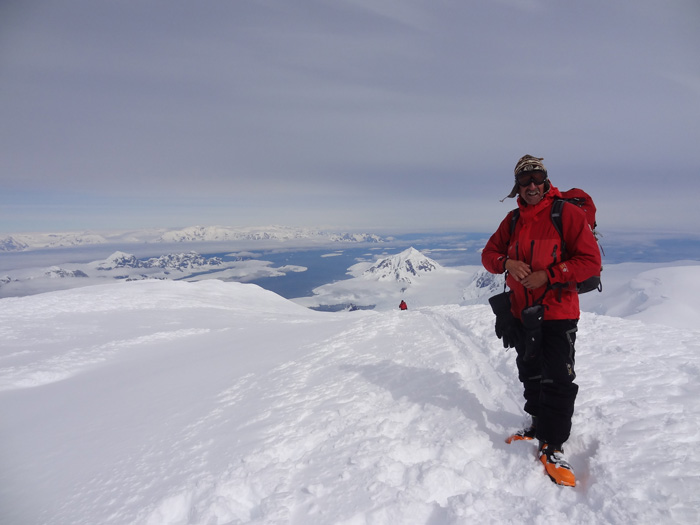
Skip on the Summit of Mt Francais
With weather now clearly threatening, we spent 10 minutes on
the top gazing down into the channels and out across the peninsular plateau.
Too short a respite for any deep reflection, but that could be done back at
base – which was a long way away. A marvelous ski off the summit back down
to the expansive col was followed by a painful slog back up to the shoulder
of Agamemnon gaining our descent route down the Menelaus Ridge.
A long ski down this broad shoulder was made more challenging by increasing
winds with spindrift on our right flank and by the time we found our red
flag marker above the camp, it was a full blown hooly, visibility nil. A
quick descent over the edge and the wind dropped and visibility cleared,
giving us the treat of a superb ski down to the camp in soft snow. The
timing had been perfect as it happened by chance, and for me this was a
great way to celebrate my 60th year, having admired Mt Francais for the last
25 years, but due to one thing and another, never having climbed it.
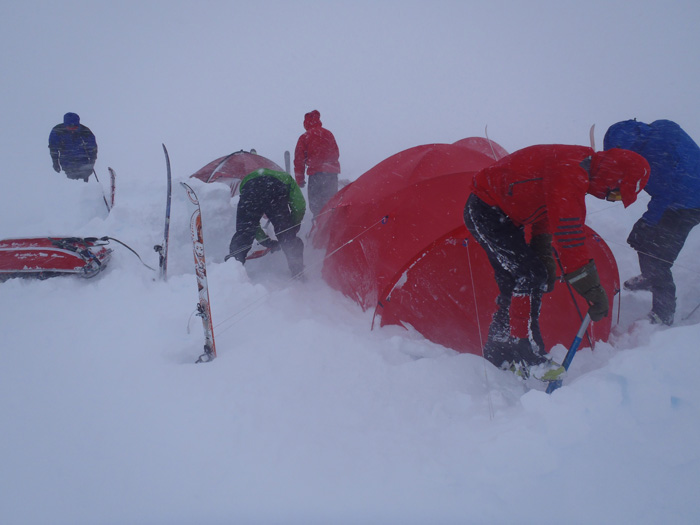
Digging out during the storm
Needless-to say, the next two days were spent tent bound as
the storm passed through. Digging out, building snow walls, cooking and
eating the result was the form. Boredom combined with bursting bowels
prompted Stephen to spend three hours building an igloo (that became more
like a teepee) for a loo, as our snow latrine was totally unusable in the
howling winds. No sooner had he finished the job than the wind started to
abate . . . . but it proved to be a popular destination, with a queue worthy
of any Disney World attraction.
Anticipating a lull before the southwesterly cold front, we scuttled down to
the beach in one long day, navigating by GPS and compass in a milky soup,
testing the patience of the man in front being kept on course by the third
man on the rope. We arrived at Access Point late at 2100 on the 16th, with
the wind earlier having flicked into the south – too late for the pick up as
the swell was already on the rise making a dinghy extraction untenable. Two
more days at the beach camp were spent resting, eating and strolling around
the rocks, before our lift off on the morning of the 18th when the swell
eased. A happy ending to a very satisfying adventure.

The team after pick up at Access point
As always, with the main objective behind us, pressure came off from that big picture and we spent a spectacular week that remained mooching around the Penola Straits with ascents of Mt Scott, Mt Demaria and Hovgaard Island on ski, kayaking in the archipelagos, photographing icebergs, gawking at penguins and seals as they gawked at us and strolling about aimlessly on shore soaking it all in.
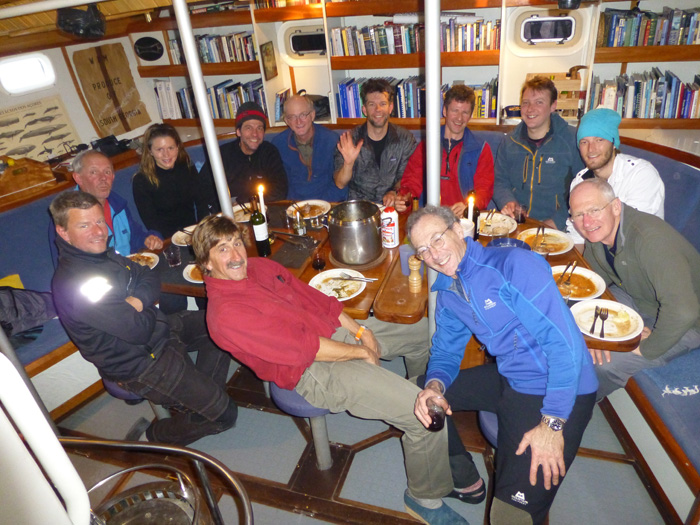
Back at Base Camp Pelagic
There always has to be a focus to these trips and
mountaineering certainly provides that. The camaraderie is an important by
product of the experience. The better you are organized, the better the
outcome. The lazy days though are all part of it, time to reflect, time to
dream without a schedule and structure. In the Antarctic, after the hard
days, this is the icing on the cake.
Skip Novak
Hamble UK
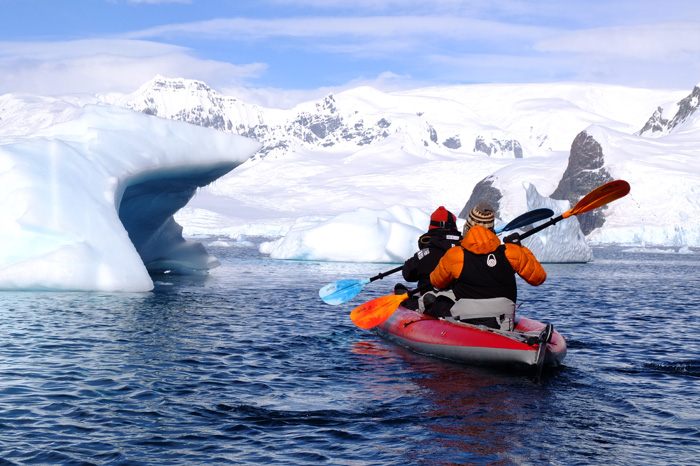
A bit of relaxation
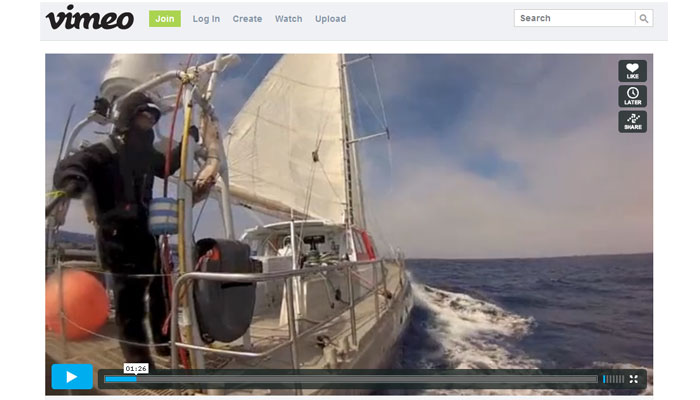
Click image to watch 20 minute video of our 2013 sailing to climb expedition
to Antarctica

